Introduction to AI in Sports
Artificial Intelligence (AI) is revolutionizing the sports industry across the globe, transforming how athletes train, how teams compete, and how fans experience the game. From professional leagues to amateur sports, AI technologies are being integrated into every aspect of athletics, providing unprecedented insights and capabilities.
AI in sports refers to the application of machine learning, computer vision, data analytics, and other artificial intelligence technologies to enhance various aspects of sports. These technologies can analyze vast amounts of data in real-time, identify patterns that humans might miss, and provide actionable insights to improve performance, strategy, and decision-making.
The integration of AI into sports is not just an abstract technological advancement—it's a practical revolution that's changing the game at all levels. For athletes, coaches, and fans alike, AI offers a world of possibilities where performance is sharper, engagement is deeper, and the entire sports experience is redefined.
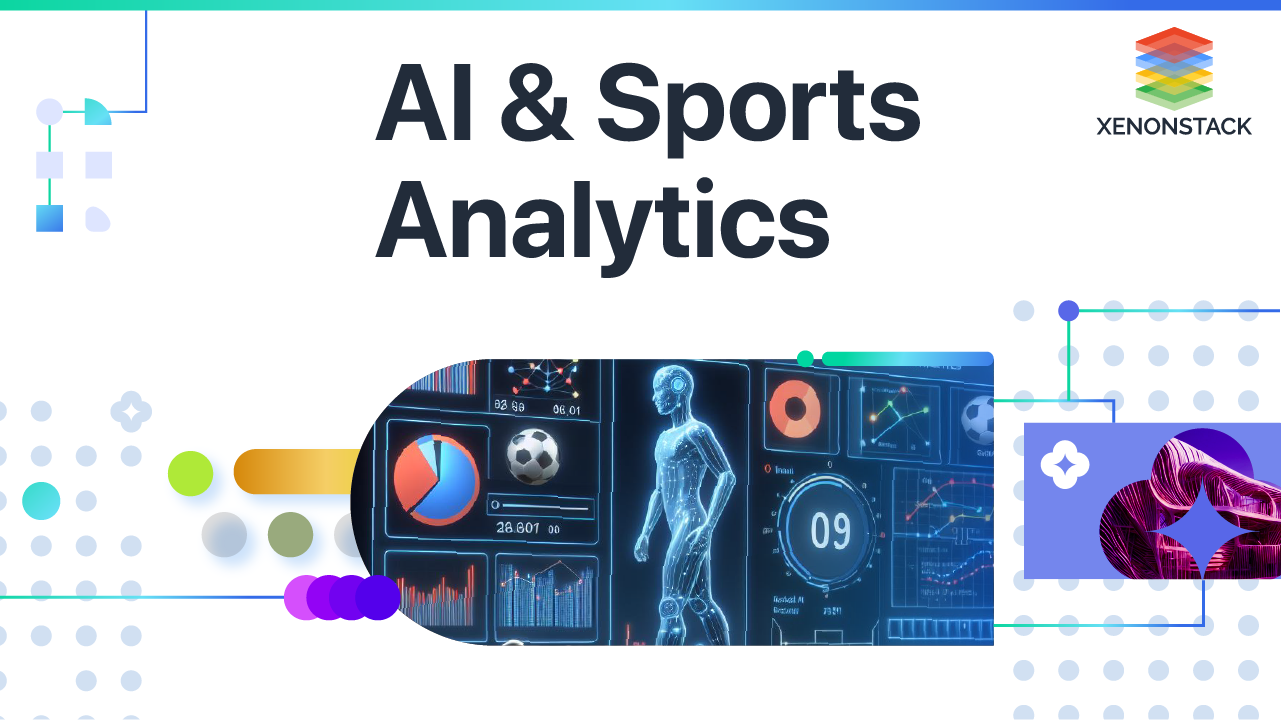
Market Overview and Growth Projections
The global AI in sports market is experiencing explosive growth, reflecting the increasing adoption of these technologies across the sports industry. According to recent market research, the AI in sports market was valued at $2.2 billion in 2022 and is projected to grow at a compound annual growth rate (CAGR) of 30.1% from 2023 to 2032, reaching an estimated market size of $29.7 billion by 2032.
Key Market Statistics:
- Current market value (2022): $2.2 billion
- Projected CAGR (2023-2032): 30.1%
- Expected market size by 2032: $29.7 billion
- Surge in demand for data analytics in sports: 23% growth from 2021 to 2031
This remarkable growth is driven by several factors, including the increasing availability of sports data, advancements in AI technologies, growing demand for personalized fan experiences, and the proven benefits of AI in enhancing athletic performance and preventing injuries. As teams and organizations continue to recognize the competitive advantages offered by AI technologies, investment in this sector is expected to accelerate further.
AI Applications in Different Sports
AI technologies are being implemented across a wide range of sports disciplines worldwide, each with unique applications tailored to the specific demands and characteristics of the sport. Here are some notable examples:
Football/Soccer
Several football clubs have implemented AI systems to enhance performance and prevent injuries. Notably, Spanish club Getafe has adopted Zone7, an AI-driven platform that analyzes game, medical, and training data to predict and prevent injuries before they occur. The results have been impressive:
- 70% reduction in injuries per 1000 hours
- 65% reduction in match injuries
- 65% reduction in days lost to injuries

Rugby
In rugby, Toshiba has introduced advanced AI video and audio analysis software that tracks the game in real-time. Using machine learning capabilities, the software tracks players and the ball, even identifying when specific events like scrums, passes, and tackles have occurred. This technology helps referees make more accurate calls and provides coaches with detailed insights for strategy development.
Tennis
Researchers at Queensland University of Technology in Australia have developed an AI system using the Hawk-Eye Ball Tracking System. By recording data points on tennis shots from professional players like Rafael Nadal and Roger Federer, the system can accurately predict how a player's shot will play out, whether it will be returned, and where the returned ball is likely to land. This technology benefits players in training by providing a "bird's eye view" of match dynamics.
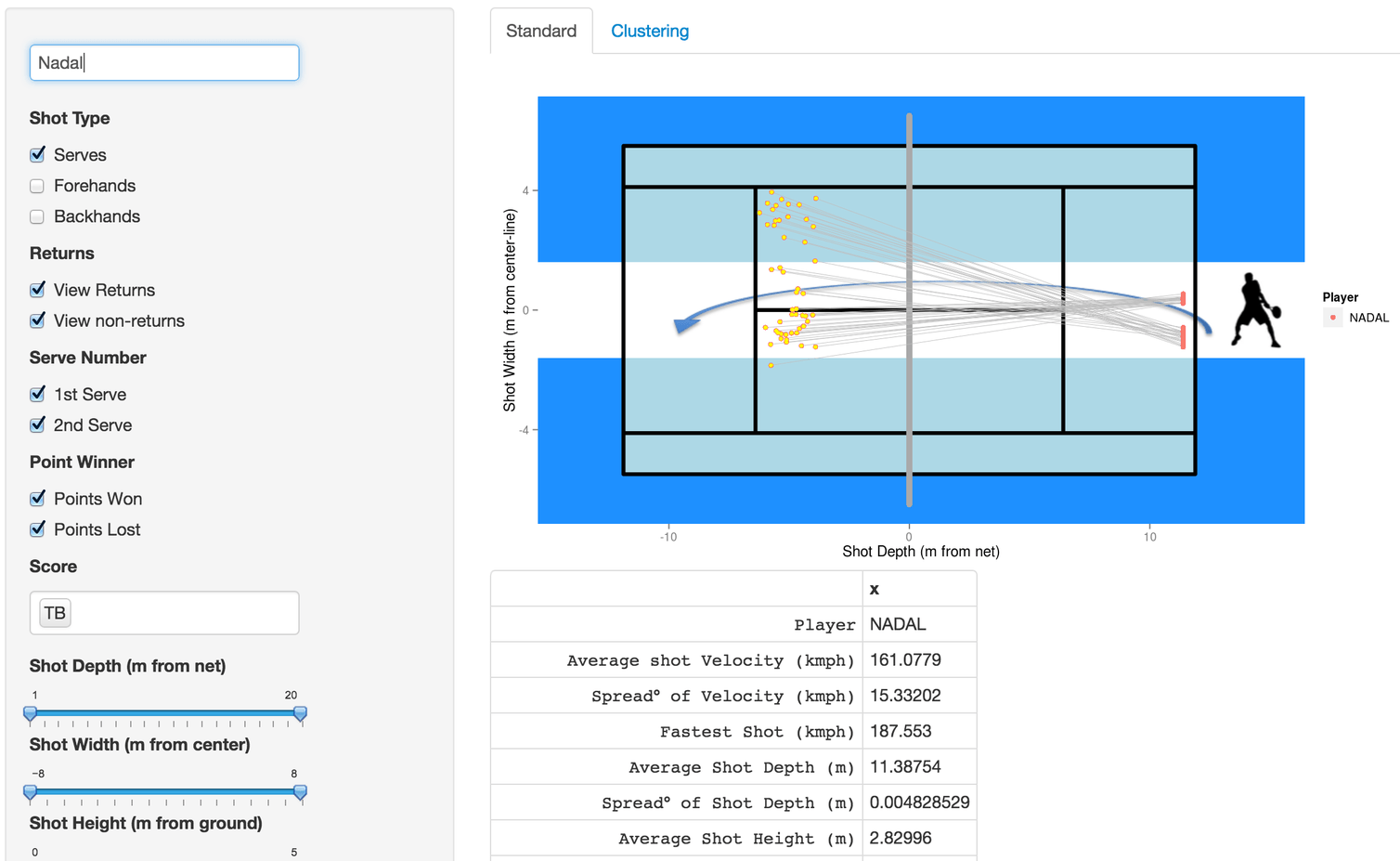
Basketball
NBA teams have implemented optical tracking technology like SportVU to gather detailed data during games. This AI software can track player movement 25 times per second, providing pattern recognition capabilities that predict how the game is played. SportVU has revealed insights into the most detailed aspects of basketball, including the arc of players' shots, helping coaches and players improve aspects of their game that would be invisible to the naked eye.
Baseball
Major League Baseball (MLB) has been experimenting with AI to improve officiating accuracy. In 2018, umpires missed an average of 14 ball-strike calls per game. To address this issue, "robot umpires" using TrackMan technology have been tested. This system sits above home plate and uses a 3D radar doppler dish to accurately read pitches, creating a personalized strike zone based on each player's height.
Gymnastics
World gymnastics organizations have implemented AI-assisted Judging Support Systems (JSS), developed by Fujitsu in collaboration with the International Gymnastics Federation (FIG). These systems use high-definition cameras to capture and analyze gymnasts' movements in 3D, comparing them to a database of recognized gymnastic elements to provide precise scoring insights. This technology helps reduce human error and provide more consistent evaluations.
How AI Enhances Athlete Performance
AI technologies are revolutionizing how athletes train, perform, and recover, providing tools and insights that were previously unimaginable. Here are the key ways AI enhances athlete performance:
Performance Analysis
AI systems can analyze each player's performance on various factors such as speed, gait patterns, and endurance. By processing this data, AI provides athletes and coaches with deeper insights into individual performance as well as team and opponent dynamics. These insights help identify strengths, weaknesses, and areas for improvement that might not be apparent through traditional observation.
Personalized Training
AI can create hyperpersonalized training plans for individual athletes by analyzing biometric, performance, and movement data. These tailored plans include workouts, rest cycles, and nutrition guidelines optimized for each athlete's specific needs, goals, and physiological responses. This personalization maximizes training effectiveness while minimizing the risk of overtraining and injury.
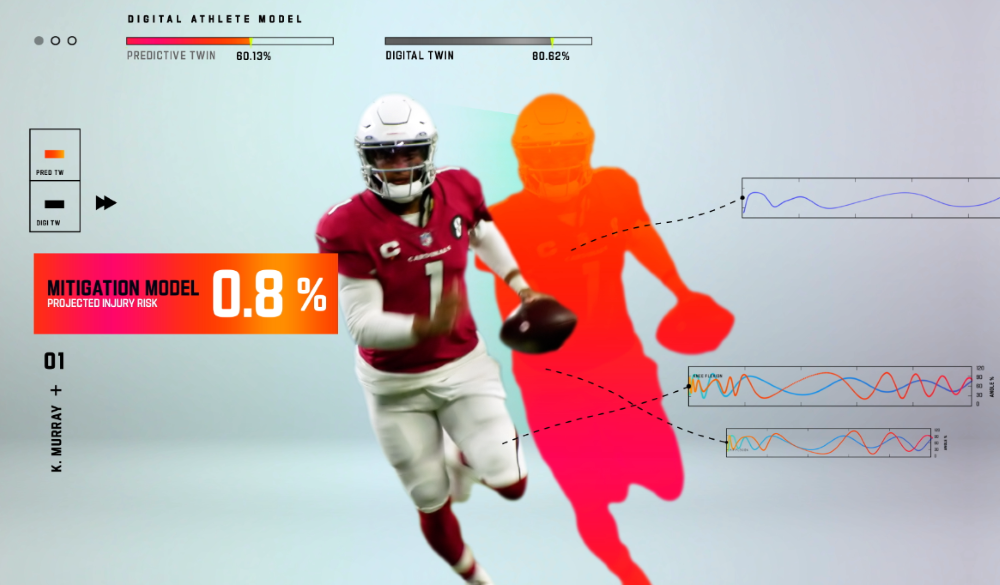
Injury Prevention
One of the most valuable applications of AI in sports is injury prevention. By analyzing training loads, physiological data, and movement patterns, AI systems can identify indicators that may predict injuries before they occur. This allows coaches and medical staff to intervene proactively, adjusting training loads, technique, or recovery protocols to prevent injuries and keep athletes healthy.
Biomechanics and Motion Analysis
AI-based biomechanics and motion analysis systems use computer vision and motion capture to provide real-time feedback on an athlete's posture, form, and technique. This immediate feedback enables athletes to make corrections during training sessions, improving technique efficiency and reducing the risk of injury caused by poor form.
Nutrition Optimization
AI-powered nutrition optimization engines analyze how an athlete's body reacts to various foods, hydration levels, and nutrients to tailor meal plans and supplement routines. This personalized approach to nutrition ensures athletes receive optimal fuel for performance and recovery, maximizing energy levels and promoting efficient recovery between training sessions and competitions.
Recovery Management
AI recovery management systems use data from training intensity and physiological response to prescribe custom recovery protocols such as cryotherapy, massage, stretching, and rest duration. By optimizing recovery based on individual needs and responses, these systems help athletes recover more effectively between training sessions and competitions, maintaining peak performance over time.
AI Applications for Referees and Judging
AI is increasingly being used to promote fair play by assisting in decision-making processes and reducing human error in officiating and judging. These applications help ensure competitions are judged accurately and consistently, maintaining the integrity of sports.
AI-Assisted Decision-Making Systems
AI systems analyze live game footage to support referees in making fast, accurate calls, particularly during high-pressure moments when human judgment might be compromised. These systems provide additional information and perspectives that help referees make more informed decisions, reducing errors and controversies.
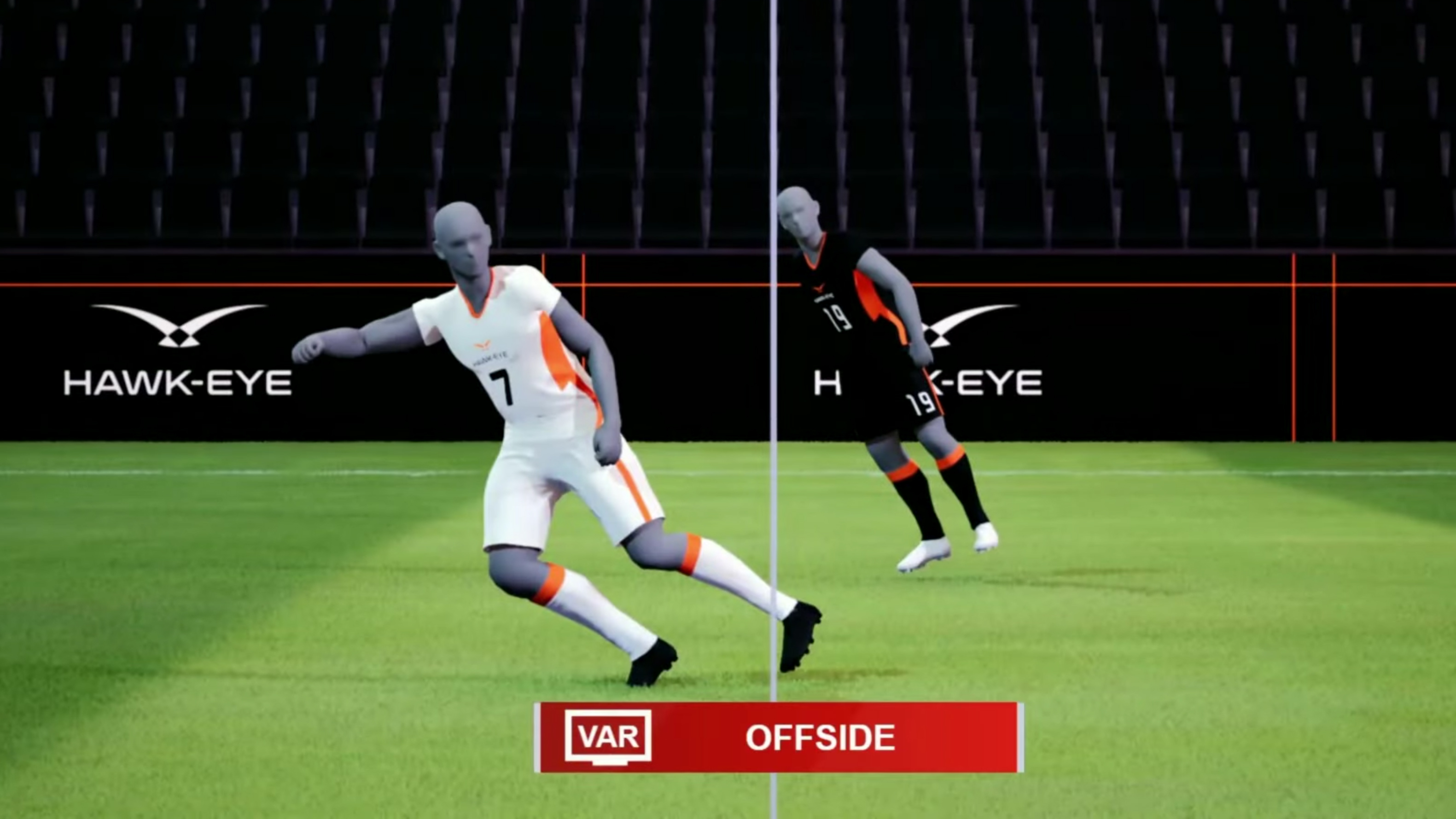
Semi-Automated Offside Technology (SAOT)
In soccer, Semi-Automated Offside Technology uses AI, multiple cameras, and sensors to automate offside decisions. This advanced officiating tool delivers accurate real-time data to Video Assistant Referee (VAR) officials, significantly improving the speed and accuracy of offside calls, which have traditionally been among the most contentious decisions in soccer.
AI-Assisted Judging Support System (JSS)
In gymnastics and other judged sports, AI-assisted Judging Support Systems use high-definition cameras to capture and analyze athletes' movements in 3D. These systems compare movements against a vast database of recognized elements to generate objective scores based on the same criteria used by human judges. This technology helps reduce human error, provide more consistent evaluations, and minimize emotional bias in scoring.
Automated Scoring Engines
For sports that rely on judging, such as figure skating or diving, automated AI scoring engines compare athletes' performances against ideal models to deliver consistent, objective scoring. These systems analyze various aspects of the performance, including technique, form, and execution, providing scores that are based purely on performance metrics rather than subjective judgment.
Multi-Angle AI Replay Systems
AI-enhanced replay technology quickly processes footage from different camera angles, helping officials review controversial plays with greater clarity and speed. These systems can highlight specific aspects of a play, provide different perspectives, and even predict outcomes based on the available data, enabling more accurate and timely decisions during games.
AI Applications for Fan Engagement and Experience
Beyond enhancing athletic performance and officiating, AI is revolutionizing how fans experience and engage with sports. These technologies are creating more personalized, interactive, and immersive experiences that deepen fans' connections with their favorite teams and athletes.
Personalized Content
AI-powered fan personalization platforms analyze fan behavior, preferences, and engagement history to deliver hyper-personalized content such as custom highlights, notifications, and experiences. By understanding individual fan preferences, these systems can curate content that resonates with each fan, increasing engagement and satisfaction.
AI-Powered Highlights
AI technology automatically compiles and customizes highlight reels from various sports based on the preferences of fans and media rights holders. For example, at the 2024 Paris Olympics, the Olympic Broadcasting Services used AI to automatically generate highlight reels from 14 different sports, allowing for more effective audience engagement across digital and social media platforms.
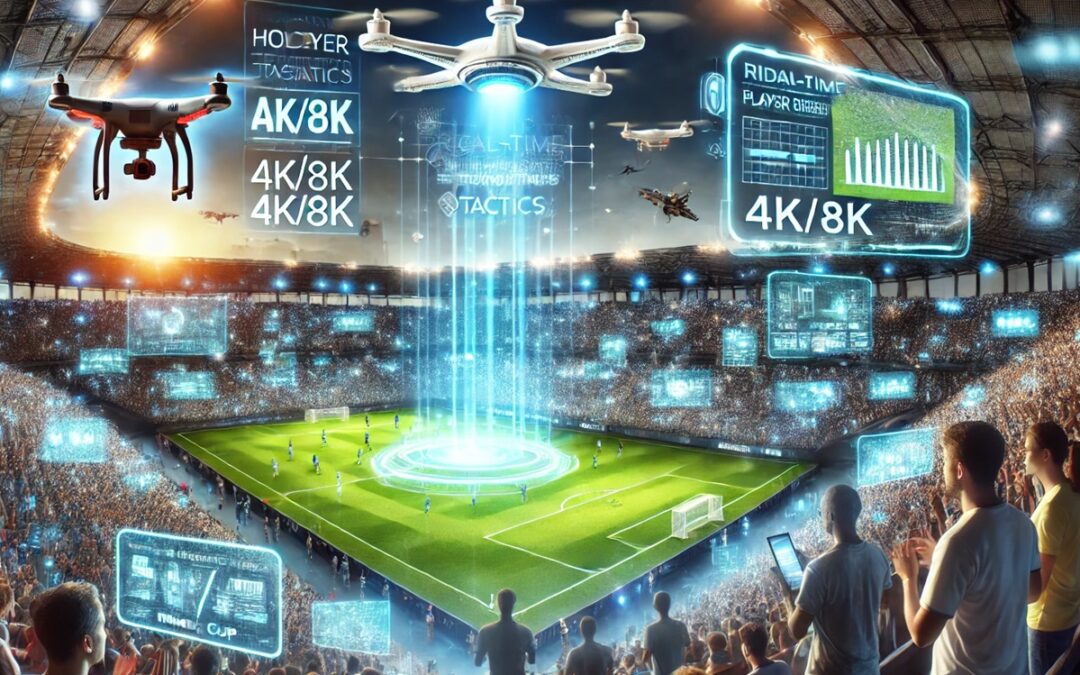
Enhanced Broadcasting
AI is being deployed to provide enhanced experiences for how sports are shown to fans. It improves internal workflows, enhances the viewer experience, enriches storytelling, and helps explain certain sports events more effectively. AI can also provide real-time statistics, graphics, and analysis that enhance the viewing experience and provide deeper insights into the game.
AI Chatbots and LLMs
AI-powered chatbots and large language models (LLMs) continue to improve fan interaction with professional sports teams. These bots provide instant responses to queries, allowing for engagement at any time the fan wants to interact. They handle a wide range of tasks, from answering frequently asked questions to providing real-time updates on games and events, creating a more tailored fan experience.
Immersive Experiences
AI combined with augmented reality (AR) and virtual reality (VR) technologies delivers immersive experiences like 360-degree virtual stadium tours, real-time stat overlays, and interactive live streams. These technologies allow fans to experience sports in new and exciting ways, from virtually sitting courtside at a basketball game to experiencing the perspective of their favorite players on the field.
Future Trends and Developments
As AI technology continues to evolve, its role in sports is expected to expand and deepen, introducing new capabilities and possibilities. Several emerging trends are likely to shape the future of AI in sports:
Advanced Predictive Analytics
Future AI systems will employ more sophisticated models for predicting game outcomes, player performance, and even career trajectories. These advanced predictive analytics will provide teams with even deeper insights for strategic planning, talent identification, and performance optimization.
Wearable AI Technology
The integration of AI into wearable technology and sports equipment will continue to advance, with smart fabrics, intelligent equipment, and embedded sensors providing real-time data and feedback. These technologies will enable continuous monitoring and analysis of athlete performance, health, and safety metrics.
Virtual and Augmented Reality Training
AI-powered VR and AR training systems will create increasingly realistic and immersive training environments, allowing athletes to practice and refine their skills in virtual settings that simulate real-game conditions. These technologies will enable more effective training, particularly for scenarios that are difficult to replicate in traditional training environments.
Emotional AI
Emerging emotional AI technologies will analyze players' emotional states, stress levels, and mental well-being, providing insights into the psychological aspects of athletic performance. These systems will help coaches and support staff better understand and address the mental and emotional challenges faced by athletes.
Global Adoption
While AI in sports is currently more prevalent in wealthy leagues and organizations, the technology is becoming increasingly accessible, leading to broader global adoption. This democratization of AI technology will enable teams and athletes at all levels and in all regions to benefit from these advancements.
Ethical Considerations
As AI becomes more integrated into sports, there will be increasing focus on ethical considerations, including data privacy, algorithmic fairness, and the potential for technology to create unfair advantages. Sports organizations will need to develop policies and frameworks to ensure that AI is used responsibly and equitably.
Conclusion
Artificial Intelligence is transforming the world of sports in profound and far-reaching ways. From enhancing athlete performance and preventing injuries to improving officiating accuracy and creating more engaging fan experiences, AI technologies are revolutionizing every aspect of athletics.
As we've seen across different sports disciplines worldwide, AI is providing unprecedented insights and capabilities that were previously unimaginable. The market for AI in sports is growing rapidly, reflecting the increasing recognition of these technologies' value and potential.
Looking ahead, the future of AI in sports promises even more exciting developments, with advanced predictive analytics, wearable technology, immersive training environments, and emotional AI set to further transform how athletes train, compete, and recover.
As these technologies continue to evolve, their impact on the sports industry will only deepen, creating new possibilities for athletes, teams, officials, and fans alike. The integration of AI into sports is not just changing how we play and watch games—it's redefining the very nature of athletic competition and engagement.
